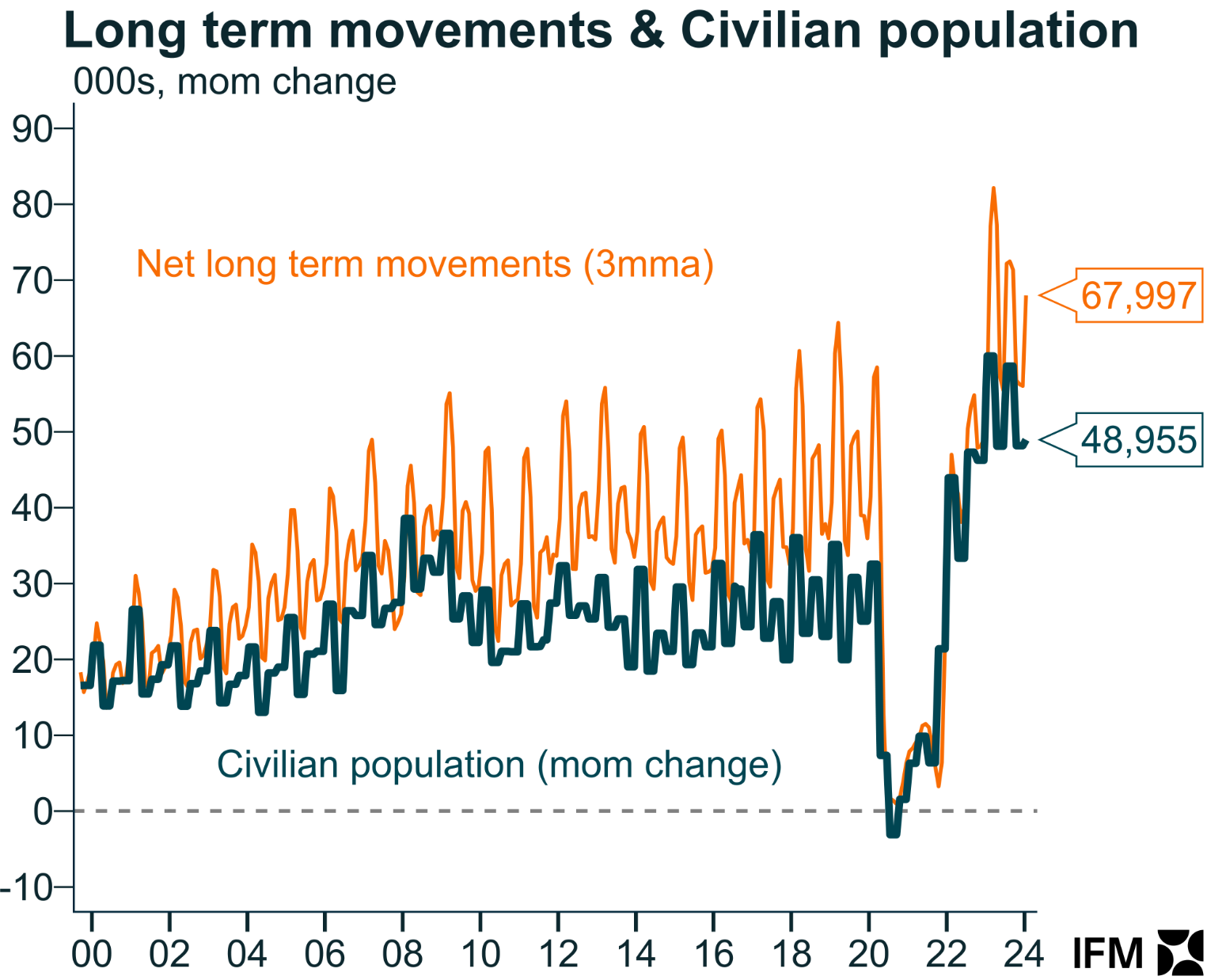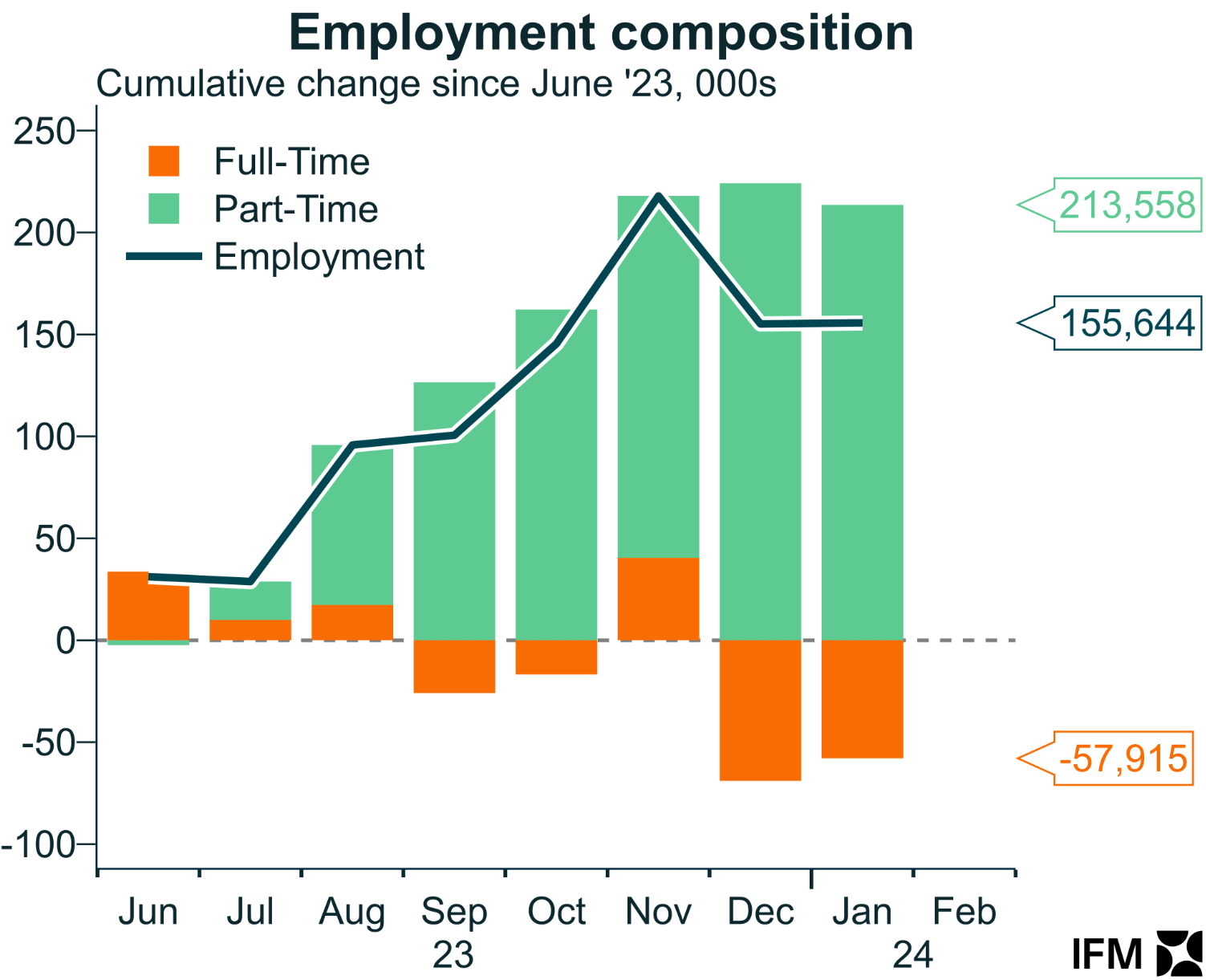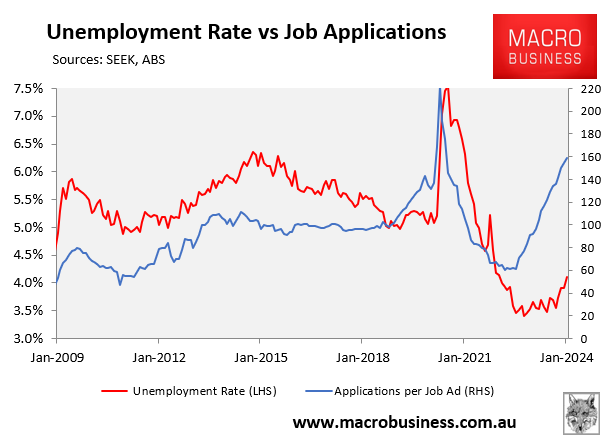CBA estimated that Australia needs to create nearly 35,000 jobs per month to keep the unemployment rate stable, assuming no change in the labour force participation rate:

The December quarter national accounts suggested that Australia’s population grew by around 680,000 people in 2023, which was the strongest growth on record:

Then last week, we received net permanent and long-term arrivals data from the Australian Bureau of Statistics (ABS), which reported the strongest net January arrivals figures on record (i.e. 55,000).
This suggests that net overseas migration, and ergo labour supply, continues to rise:

Source: Shane Oliver (AMP)
On Friday, Alex Joiner, chief economist at IFM Investors, posted the below chart on Twitter (X) showing that “labour supply will remain solid for some time yet. Labour demand will need to keep up or the RBA’s unemployment forecast peak of 4.4% could be reached much sooner than expected”:

Source: Alex Joiner
This record growth in labour supply is arriving at the same time as demand for workers from employers is slowing.
The latest Seek data shows that job ads have fallen to around pre-pandemic levels, whereas the number of applicants per job ad has soared way above pre-pandemic levels:

The number of hours worked across the economy has also collapsed since June 2023:

Source: Alex Joiner
In part, this collapse in hours worked reflects the sharp 58,000 decline in full-time jobs since June 2023 and the rotation to part-time:

Source: Alex Joiner
The decline in labour demand and the swelling of supply point to significantly higher unemployment this year:

As a result, the RBA’s forecasted 4.3% unemployment rate by the end of the year and the peak forecast of 4.4% next year look highly optimistic.
Rising unemployment is the main reason why I believe the RBA will be forced to cut interest rates in the second half of the year.

